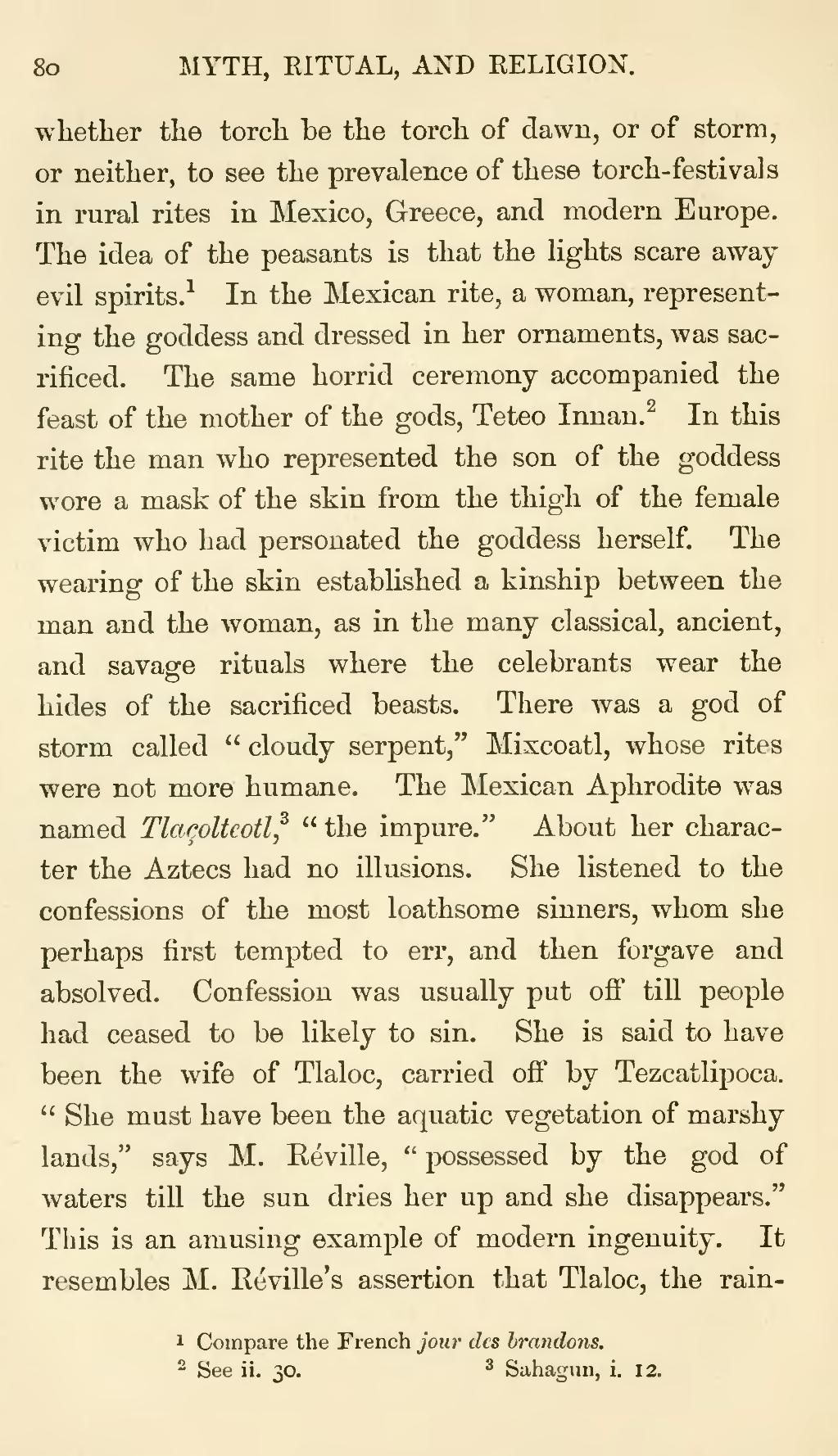whether the torch be the torch of dawn, or of storm, or neither, to see the prevalence of these torch-festivals in rural rites in Mexico, Greece, and modern Europe. The idea of the peasants is that the lights scare away evil spirits."[1] In the Mexican rite, a woman, representing the goddess and dressed in her ornaments, was sacrificed. The same horrid ceremony accompanied the feast of the mother of the gods, Teteo Innan.[2] In this rite the man who represented the son of the goddess wore a mask of the skin from the thigh of the female victim who had personated the goddess herself. The wearing of the skin established a kinship between the man and the woman, as in the many classical, ancient, and savage rituals where the celebrants wear the hides of the sacrificed beasts. There was a god of storm called "cloudy serpent," Mixcoatl, whose rites were not more humane. The Mexican Aphrodite was named Tlaçolteotl,[3] "the impure." About her character the Aztecs had no illusions. She listened to the confessions of the most loathsome sinners, whom she perhaps first tempted to err, and then forgave and absolved. Confession was usually put off till people had ceased to be likely to sin. She is said to have been the wife of Tlaloc, carried off by Tezcatlipoca. "She must have been the aquatic vegetation of marshy lands," says M. Réville, "possessed by the god of waters till the sun dries her up and she disappears." This is an amusing example of modern ingenuity. It resembles M. Réville's assertion that Tlaloc, the rain-
